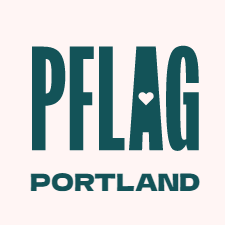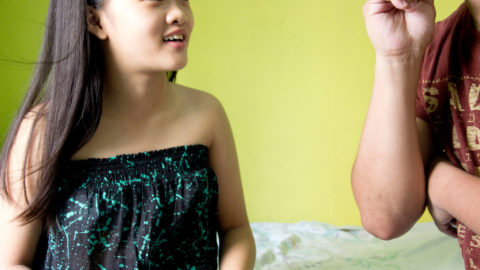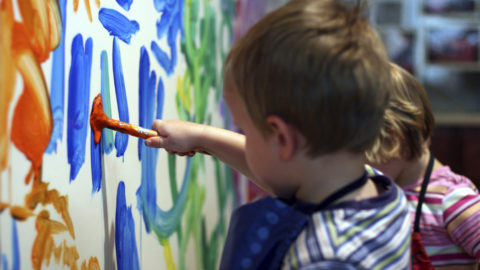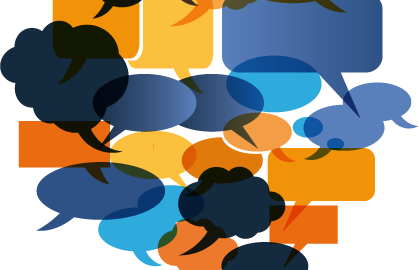Here’s some basic information to get you started.
For a deeper discussion, click on one of the topics on the menu.
What does LGBTQ mean?
It is a acronym for Lesbian, Gay, Bisexual, Transgender, Queer. These terms describe certain aspects of sexual orientation and gender identity. LGBTQ is often used as an umbrella term for anyone who is “not straight”, but it can confuse by its lumping together of these very different human dimensions. So let's step back for a minute and clearly define each of these terms.
Let's start with sex. Sex is the categorization of you as male, female, or intersex in anatomical or chromosomal terms. It's the box that's checked on your birth certificate by the doctor who delivers you. We often use the term assigned sex to emphasize this. In common speech we confusingly use the word sex when we talk about gender, which is very different.
Gender is a set of traits associated by our culture with maleness or femaleness, traditionally expected to be determined by one's anatomy - but that actually is not.
Gender identity is how you perceive yourself: male, female, or somewhere in between. Related to this are:
- gender expression– how you act and dress.
- gender perception – how others see you.
A lot of the problems LGBTQ people experience are ones of perception. Human beings instinctively try to categorize and thereby define others based on easily observable characteristics. We react to others based on how others present to us. We're wired that way, but our wiring can fail us. If there's anything we know about being human, it's that we're far more complex than our simplistic categorizations can describe.
Sexual orientation is simply which gender person you love. If you love people of the opposite gender, you're Straight; if you love people of the same gender, you're Gay (male) or Lesbian (female). If you're able to form loving relationships with either gender, you're Bisexual.
Transgender people don’t identify with the gender that their assigned sex would imply. They may identify as female, male, a combination of both, or neither – independent of their sexual orientation.
There are as many Sexual Orientations and Gender Identities as there are people.
Though many of us would describe ourselves as this orientation and that gender, we're not identical. Assuming so leads to a lot of misunderstanding. Sexual Orientation and Gender Identity are better thought of as on a continuum. Parsing this continuum is a tricky task, and inherently limiting. Many younger people (straight or LGBTQ) no longer bother, preferring to not define themselves in terms of sexual or gender roles. If pressed they may simply describe themselves as Queer, but not universally, particularly outside of their peer group. Ask first before you use this term, and use it only with permission and with discretion.
PFLAG uses LGBTQ when talking about the “not straight” community as a whole, and specific terms when talking about particular individuals or groups.
Being LGBTQ is natural.
Sexual orientation and gender identity are innate traits. They are normal and natural human characteristics, and are just two of the many ways that people differ. No one is sure why people are born LGBTQ, but it is most definitely not a “lifestyle” choice. By current estimates 10% of the population is LGBTQ. Around the world, and throughout history. LGBTQ people come in all colors and faiths, from all cultures and all walks of life.
LGBTQ people are part of the family.
Like everyone else, LGBTQ people have families and friends who love them, and whom they love and care for. Like every human being, LGBTQ people need their families’ unconditional love and acceptance, and those who receive it have a greater chance of living a healthy and fulfilling life. For those who do not, the consequences are often tragic – for themselves as well as their families.
Being LGBTQ is not a disorder and cannot be changed.
Both the American Psychiatric Association and the American Psychological Association have recognized that homosexuality is not a mental or emotional disorder. Therefore, it does not need to be “cured.” Psychiatrists and Psychologists have concluded similarly for transgender people.
So-called “ex-gay” (also called reparative or conversion) therapy hurts LGBTQ people and only drives them deeper into the closet. The leading medical associations are in full agreement that it does not change their innate orientation or identity and may even be harmful. Think about it. If you are straight, do you really think you could “learn” through therapy to be attracted to the same sex? If you know you are female, do you think you could learn to identify as male? Attempts to change sexual orientation or gender identity originate from cultural bias based on myth, misperception and misunderstanding. Our challenge is not to change LGBTQ people, but to change the cultural bias that denies their full humanity.
Diving In…
Ready to learn more? Pick a topic from the menu.








